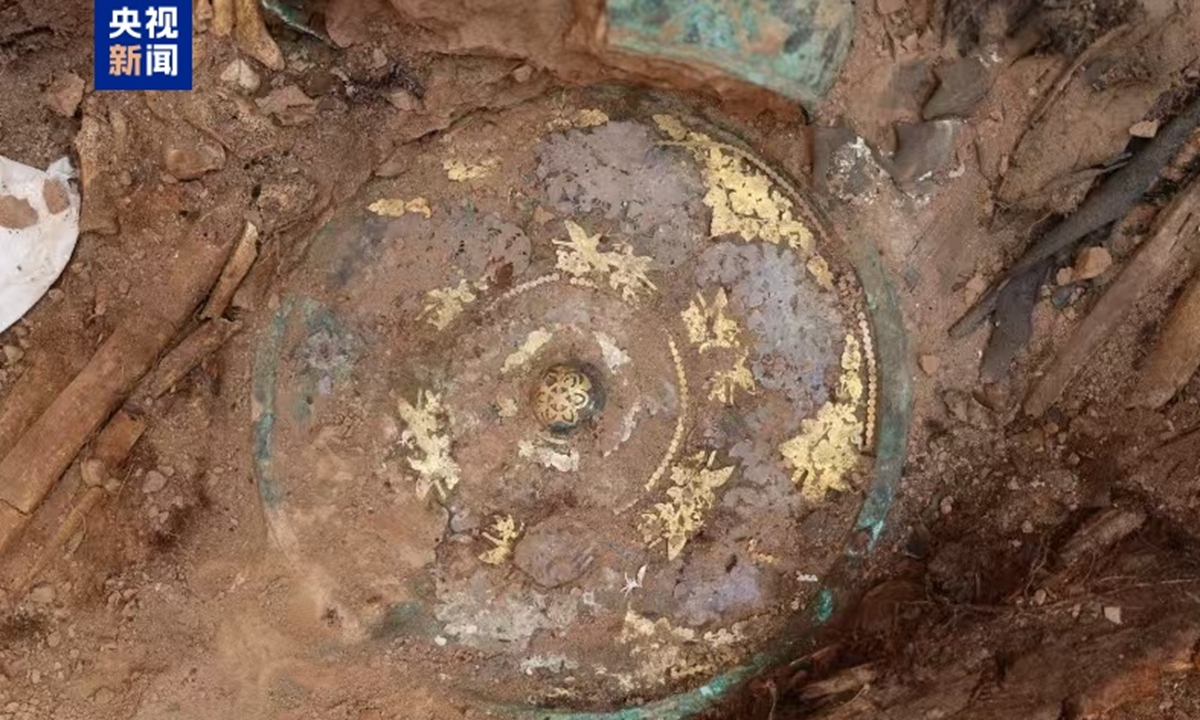
Photo: CCTV
A tablet inscribed with 580 characters depicting the life story of Li Chonghui has recently been found in a Tang Dynasty (618-907) tomb in Turpan, Northwest China's Xinjiang Uygur Autonomous Region. Li, the epigraph's owner, was identified as a senior official of the Tang central government's administration overseeing the ancient Xizhou prefecture, or today's city of Turpan, and its surrounding areas.
The tomb was discovered at the foot of the local landmark Flaming Mountain. On the epitaph stone, Li was noted as someone born in the second year of the Shenlong era (706) of the Tang Dynasty and had lived for 83 years.
According to his epitaph, Li died in 789, the fifth year of the Zhenyuan era of the Tang Dynasty. Shang Yuping, leader of the archaeological project, told the Global Times that the inscription is a "window into the bond between China's western regions and the Central Plains."
Li died after the An Lushan Rebellion, a severe political upheaval, after which the Central Plains' connection to the western regions was disrupted. Shang told the Global Times that the dating system on Li's epitaph reveals how the ancient Xizhou administration had "adhered to the social regulations and the cultural traditions of the Central Plains" despite turmoil and geographical distance.
"When Li passed away, Xizhou's social condition was precarious. However, it maintained its loyalty in the central government while resisting other rebellious forces," Shang noted.
The epitaph also recorded Li's four official positions. The final one, also his most important title, was the zhang shi of Xizhou. This is similar to the position of today's secretary-general of an administrative body, and it ranks right below the head official, Shang told the Global Times.
"His four job positions match the logic of how an official got promoted during that time. This also reveals that government mechanisms were operating well," Shang emphasized.
As a loyal civil servant, Li traveled from the Gua prefecture, which was mainly in today's Jiuquan and its related areas in Gansu Province, to Xizhou to maintain the frontier area's stability.
"Through the epitaph, we see the political, cultural and social ecology of Xizhou," Shang said.
Including the Tang tomb where the epitaph was discovered, another two Tang tombs and four tombs of the Sixteen Kingdoms period (304-439) were also unearthed, making the archaeological site a cluster of burial remains.
Precious relics such as a bronze mirror combining lacquer coating with gold inlay were also discovered. During the Tang Dynasty, bronze mirrors such as this one were gifted by the emperor to his trusted ministers or foreign guests. The unearthed mirror is evidence of this ritual custom binding the Central Plains and the western regions.
A large number of coins were unearthed at the burial site, including major Tang currencies such as Kaiyuan Tongbao and Qianyuan Zhongbao. These ancient coins were found mixed with ancient foreign currencies such as coins from Persia.
"These relics reveal that ancient Xizhou was an important hub for exchanges along the ancient Silk Road," Shang emphasized.




